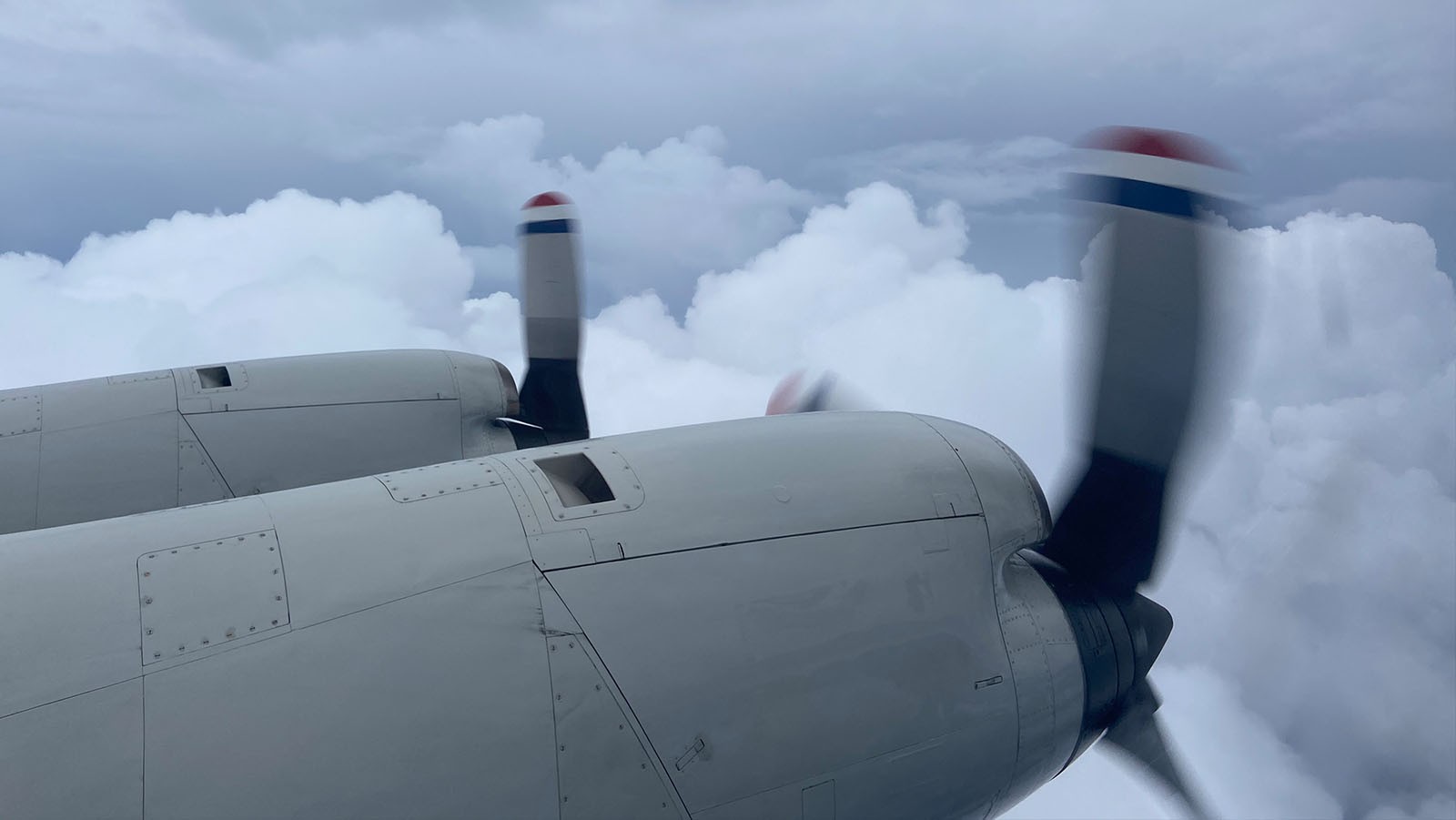NOAA’s P-3 Hurricane Hunter aircraft completed a flight into Tropical Storm Nana in the Caribbean on Wednesday morning. AOML scientists onboard the aircraft, and from the ground, quality controlled and sent dropsonde and radar data to the Environmental Modeling Center (EMC) and National Hurricane Center (NHC) in real time. According to NHC, data from the mission showed that the system is “rather small.”
This flight marks the first time an AOML scientist has been able to participate in-person for the 2020 hurricane season. Firsthand participation on hurricane flights opens up new possibilities for research. Scientists are now able to make quicker, more in-depth assessments of the conditions of the storm.
Scientists can conduct additional research, often referred to as a “module” in the Experiment Plan. This could mean using extra dropsondes or flying in a different area of the storm for a short time to help achieve the goal of the module.
No future NOAA flights are planned at this time into Nana. Tropical Storm Nana became the earliest named “N” storm ever on September 1. NHC forecasts that it will make landfall over Belize in the next 12 to 24 hours.
For the latest information about tropical cyclones and other weather systems, visit the NOAA National Weather Service National Hurricane Center.
For information on numerical prediction of tropical cyclones, visit the NOAA National Centers for Environmental Prediction Environmental Modeling Center.
